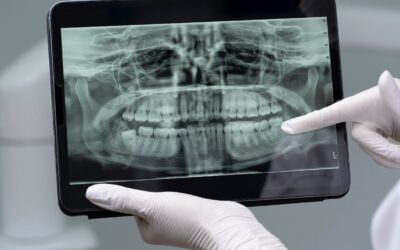If you’ve ever experienced tightness in your bottom teeth, you’re not alone. It’s a feeling that many people go through, yet it’s often hard to pinpoint exactly why it happens. The sensation of tightness can be uncomfortable and sometimes concerning, leaving you wondering whether it’s something serious or just a temporary issue. The truth is, there are several potential causes for this discomfort, ranging from simple habits to more serious dental problems. In this article, we will break down the most common reasons why your bottom teeth feel tight and how you can manage or fix the problem. Whether it’s due to teeth grinding, gum disease, or orthodontic adjustments, understanding the cause is the first step toward relief.
1. Teeth Grinding (Bruxism)
Teeth grinding, also known as bruxism, is one of the most common causes of tightness in the bottom teeth. This condition usually occurs unconsciously, often during sleep, and can lead to significant discomfort in the jaw and teeth. When you grind or clench your teeth, you put excessive pressure on them, which can cause muscles in the jaw to tighten. This is typically due to stress, anxiety, or even sleep disorders, which can contribute to the involuntary grinding.
The tightness in your teeth can feel like they are being squeezed, and if the grinding is severe, it can lead to tooth wear, jaw pain, headaches, and a general feeling of discomfort in your bottom teeth. If left untreated, bruxism can lead to more serious complications, such as tooth fractures or temporomandibular joint (TMJ) disorders.
Symptoms of Bruxism:
-
Jaw pain or tenderness
-
Flattened or worn-down teeth
-
Frequent headaches, especially in the morning
-
A clicking or popping sound in the jaw
-
Tightness in the bottom teeth
2. Malocclusion (Teeth Misalignment)
Malocclusion, or misalignment of your teeth, can cause your bottom teeth to feel tight. This happens when your teeth do not fit together properly, causing an uneven distribution of pressure across your bite. When your teeth are misaligned, it forces your teeth to compensate for the misalignment, which leads to tension and tightness in specific areas, often in the lower teeth.
Misalignment can be due to genetic factors, childhood habits (such as thumb-sucking), trauma to the mouth, or a lack of early dental intervention. The most common types of misalignment include overbite, underbite, and crossbite. If left untreated, malocclusion can not only lead to tightness but also cause difficulty with chewing and speaking.
Common Types of Malocclusion:
-
Overbite: The upper teeth overlap too much over the bottom teeth.
-
Underbite: The lower teeth protrude beyond the upper teeth.
-
Crossbite: Some upper teeth sit inside the bottom teeth, which causes extra pressure.
3. Gum Disease or Infection
Gum disease, also known as periodontal disease, can affect the stability of your teeth and cause a sensation of tightness. When the gums become inflamed, infected, or recede, it can create changes in the tissue surrounding your teeth, making them feel loose or tight. Gum disease is often a result of poor oral hygiene, which leads to the accumulation of plaque and tartar around the gum line.
When gum disease progresses, it can lead to bone loss, further causing your bottom teeth to shift and feel tight or uncomfortable. Early-stage gum disease, known as gingivitis, is typically reversible with proper oral care. However, if left untreated, it can lead to periodontitis, which may require more intensive treatment.
Symptoms of Gum Disease:
-
Swollen, red, or bleeding gums
-
Receding gums
-
Loose teeth
-
Persistent bad breath
-
Pain when chewing or brushing
4. Impact of Orthodontic Treatment (Braces)
If you have recently started orthodontic treatment, particularly with braces or clear aligners, you may experience tightness in your bottom teeth. This is a common experience during the first few weeks after getting braces or following any adjustments to your braces. The reason for this is simple: braces work by gradually shifting your teeth into the correct position, which often involves applying continuous pressure. This pressure can create a feeling of tightness, especially when your teeth are first starting to move.
While this sensation can be uncomfortable, it’s typically a temporary issue. Over time, as your teeth align properly, the feeling of tightness should lessen. If the discomfort persists or worsens, it’s important to consult your orthodontist to ensure there are no complications with the treatment.
Coping Tips for Braces-Induced Tightness:
-
Use orthodontic wax to ease discomfort from braces brackets.
-
Stick to soft foods during the adjustment period.
-
Take over-the-counter pain relievers as recommended by your orthodontist.
5. Poor Dental Hygiene Practices
Sometimes, tightness in your bottom teeth can be a direct result of poor oral hygiene. Inadequate brushing and flossing allow plaque and tartar to build up on your teeth, which can irritate the gums and lead to tightness or discomfort. If plaque accumulates, it can cause gum disease, which, as we’ve discussed, can affect the stability of your teeth. In addition to this, poor oral hygiene can also lead to tooth decay and cavities, both of which can create pressure on your teeth.
Maintaining a consistent and effective oral hygiene routine is crucial for preventing these issues. Brushing your teeth twice a day, flossing daily, and visiting your dentist for regular cleanings can all help ensure your teeth remain healthy and free from discomfort.
Tips for Maintaining Proper Oral Hygiene:
-
Brush your teeth for at least two minutes twice a day with fluoride toothpaste.
-
Floss daily to remove plaque between teeth.
-
Use an antibacterial mouthwash to reduce plaque buildup.
-
Visit your dentist for regular checkups and cleanings.
Solutions for Relieving Tightness in Your Bottom Teeth
1. Visit Your Dentist Regularly
The best way to address the tightness in your bottom teeth is by seeing your dentist regularly. Routine dental checkups can help identify early signs of bruxism, misalignment, gum disease, or any other issues contributing to the discomfort. Regular cleanings are essential to maintaining optimal oral health and preventing any buildup that could lead to tightness in the teeth.
2. Use a Mouthguard for Teeth Grinding
If bruxism is the cause of your tightness, your dentist may recommend wearing a custom-made mouthguard. A mouthguard will protect your teeth from the damage caused by grinding, reduce muscle strain, and help relieve the tightness. This simple device is often worn during sleep to prevent unconscious grinding.
3. Orthodontic Treatment Options
For misalignment issues, orthodontic treatments such as braces or clear aligners can help shift your teeth into proper alignment, thereby reducing the tightness you may be experiencing. It’s essential to consult an orthodontist to discuss which treatment option will work best for you.
4. Improve Your Oral Hygiene
By improving your oral hygiene, you can prevent plaque buildup, gum disease, and tooth decay, which are all contributing factors to tightness in your bottom teeth. Make sure to brush and floss regularly and visit your dentist for professional cleanings.
Frequently Asked Questions (FAQs)
Q1: Can teeth grinding cause tightness in my bottom teeth?
Yes, bruxism (teeth grinding) is one of the main causes of tightness in the bottom teeth. Grinding places excess pressure on your teeth, which can result in discomfort and tightness.
Q2: How do I know if my tight teeth are caused by misalignment?
If you feel discomfort when biting, chewing, or even at rest, it may be due to misalignment. Your dentist or orthodontist can help confirm if this is the case.
Q3: Will braces make my bottom teeth feel tighter?
Yes, braces can cause temporary tightness in your bottom teeth as they begin to shift into their correct positions. This discomfort should lessen over time as your teeth realign.
Q4: How can I stop teeth grinding at night?
Wearing a custom mouthguard at night is the most effective way to prevent teeth grinding and reduce tightness in your bottom teeth.
Q5: Is gum disease responsible for tightness in my teeth?
Yes, gum disease can cause tightness in the bottom teeth as it affects the gums and supporting bone structure. Early detection and treatment by your dentist can prevent further complications.
Q6: How can I relieve the discomfort from tightness in my bottom teeth?
To relieve tightness, it’s important to address the root cause, whether that’s bruxism, misalignment, or gum disease. Consult with your dentist for personalized advice and treatment.
Conclusion
The sensation of tightness in your bottom teeth can be caused by a variety of factors, including bruxism, misalignment, gum disease, and orthodontic treatment. Understanding the underlying cause is the first step toward finding an effective solution. Whether it’s by addressing stress-induced teeth grinding, improving your oral hygiene, or seeking orthodontic treatment, there are many ways to relieve the discomfort and improve your dental health. If the tightness persists or becomes more painful, don’t hesitate to consult with your dentist to explore further treatment options.



